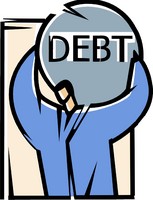Check Your Credit Card Statement Regularly
 Whether you receive your credit card statement through the mail or electronically it may not be a welcome piece of mail in most homes, but if it is not checked correctly or thoroughly credit card holders could be incurring more costs than they realize. Here is some advice on what to look for and review in your credit card statement.
Whether you receive your credit card statement through the mail or electronically it may not be a welcome piece of mail in most homes, but if it is not checked correctly or thoroughly credit card holders could be incurring more costs than they realize. Here is some advice on what to look for and review in your credit card statement.
At first glance a credit card statement can be confusing, but once you know what to look for you can save yourself money and even protect yourself against fraud.
First you’ll want to ensure that you look over the “purchases or new charges” section to review what you purchased over the previous period. Ideally you should keep your charge receipts for all purchases so that when you receive your statement you can check those charge slips against the charges listed on your statement.
The next item on your statement that you’ll want to pay special attention to are the interest rates that are applied to various charges. For instance if you took out a cash advance, you will likely pay a higher interest rate on that advance than you would on a credit card purchase for an item in a store.
Another section on your credit card statement is your previous balance section. This is the outstanding balance owed from the previous month. Double-check that balance to ensure that it is accurate.
You’ll also see on your statement the term “APR.” This stands for “annual percentage rate” and is the interest that is applied to any outstanding balance at the end of the month. The lower the rate, the less you will pay in interest.
In addition to your APR, some credit cards also apply a “finance charge.” In most cases this only applies if you are carrying a balance. In the event you do not pay off the card’s balance at the end of the month, you will likely pay a finance charge on top of your interest fees.
Reviewing your credit card statement regularly can save you money and eliminate potential problems due to erroneous transactions.


